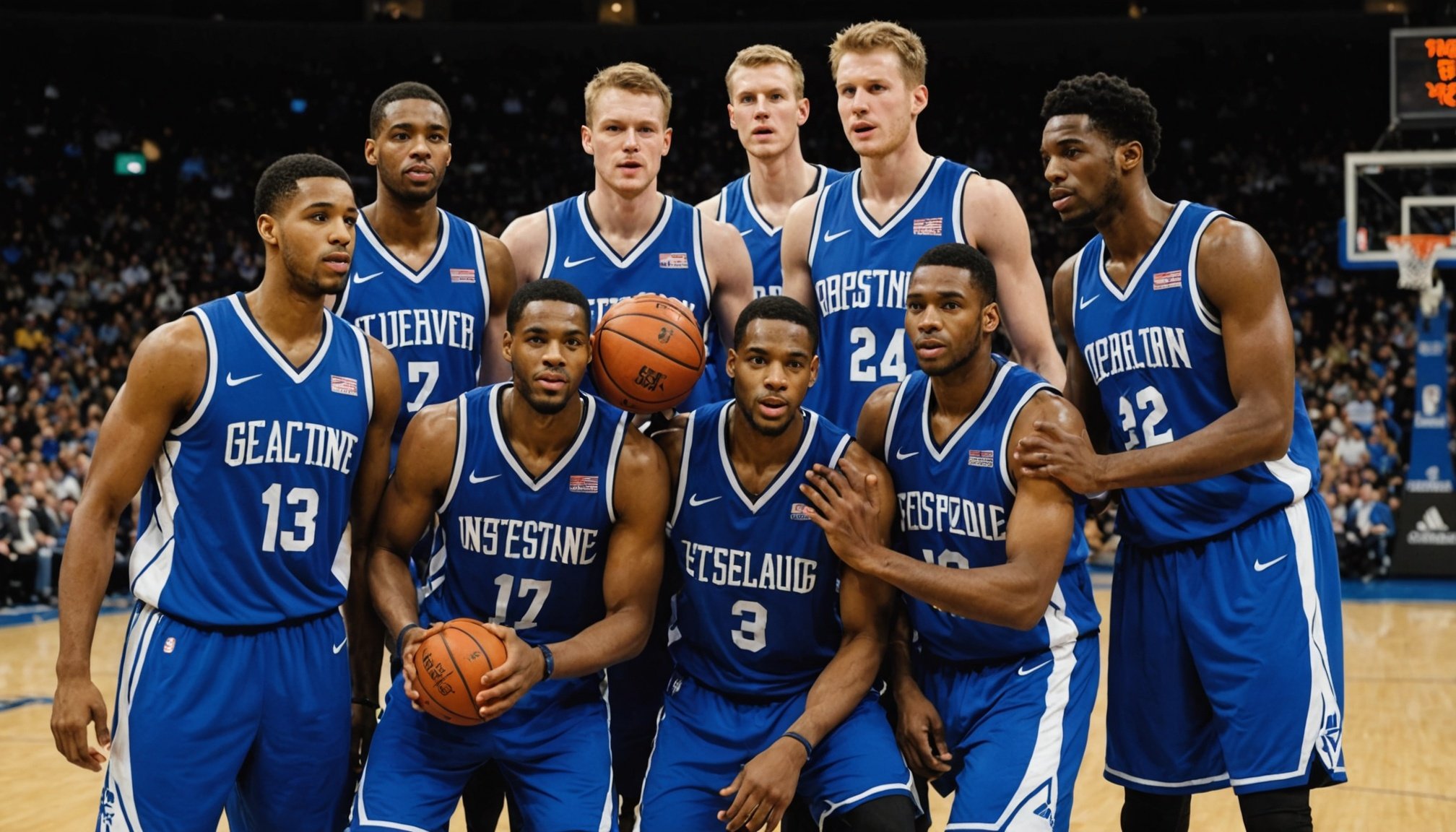Understanding Team Synergy in Basketball
Team Synergy in basketball is vital for ensuring optimal performance and achieving a high level of basketball cohesion. Without effective teamwork, even the most skilled players can struggle to succeed on the court. The significance of teamwork in basketball cannot be overstated. It involves understanding each player’s role and working harmoniously to execute strategies efficiently.
Key elements contributing to team synergy include trust, effective communication, and shared goals. Trust among teammates fosters a supportive environment, while clear communication ensures that everyone is on the same page during plays and strategies. A common goal unites the team, aligning their efforts toward success.
Also to see : Master the Court: Proven Communication Strategies to Boost UK Basketball Performance
However, achieving unity is not without its challenges. Common obstacles include individual egos and differing playing styles, which can disrupt basketball cohesion. Managing these challenges involves acknowledging them and leveraging team-building activities to mitigate their impact.
Promoting an environment that values collaboration over individual fame can greatly enhance team synergy. As players learn to anticipate each other’s moves and adapt to changing dynamics, the team’s overall performance improves. Ultimately, a strong foundation of synergy allows basketball teams to reach new heights, both in competitive settings and in their development as athletes.
In the same genre : Game-Changing Basketball Shooting Drills: Elevate UK Coaches and Players to New Heights
Team-Building Exercises
The role of Team-Building Activities in basketball is crucial for strengthening team cohesion. Effective exercises can bridge gaps in communication, enhance trust, and form the foundation for a positive team culture. Off-court activities, such as workshops or weekend retreats, present excellent opportunities for players to interact beyond the pressures of the court, building rapport and mutual respect.
In the UK, numerous basketball teams have achieved remarkable improvements in cohesion through these activities. One such case is Leicester Riders, who integrated creative Cohesion Practices that focused on collective problem-solving. By engaging the team in non-basketball related tasks that require cooperation, the players developed an understanding of each other’s problem-solving styles, enhancing their team synergy.
Implementing these strategies not only benefits relationships but also impacts performance on the court. For instance, participating in trust-building exercises, such as ‘trust falls’ or cooperative tasks, fosters a genuine understanding of a teammate’s potential and encourages supportive interactions. These activities create a supportive atmosphere where players feel comfortable relying on each other, directly translating into improved play.
Ultimately, cultivating strong off-court bonds through tailored team-building exercises paves the way for robust cooperation, ensuring that each teammate contributes effectively to achieving the team’s common goals.
Conflict Resolution Strategies
In basketball, Conflict Management is crucial for maintaining productive Team Dynamics. Promptly addressing conflicts ensures unity and prevents disruptions during games. Open, frank discussions encourage teammates to voice concerns and reach consensus. This type of communication builds trust and promotes understanding.
For effective conflict resolution, several techniques can be employed. Mediation by a neutral party often helps, allowing team members to express their viewpoints without bias. This practice supports understanding by guiding disputants toward a mutually agreeable solution. Recognizing each player’s perspective and emotional responses is critical in paving the way for resolution.
Another effective approach is having a structured process for addressing conflicts when they arise. Teams may develop a conflict resolution plan and ensure everyone is aware of the steps involved, from problem identification to resolution.
Examples from top UK teams highlight successful strategies in action. Team captains, for instance, often facilitate resolution discussions, leveraging their leadership to mediate effectively. Coaches, too, play a key role by setting expectations for conduct and promoting a culture of respect. By actively managing conflicts and fostering an environment of collaboration, basketball teams can significantly enhance their cohesion and performance.
Effective Communication Techniques
In basketball, robust Communication Strategies are critical to enhance performance on the court, facilitating seamless Team Interactions. Open and clear communication ensures players are synchronized during gameplay, reducing errors and improving decision-making. Effective communication techniques are essential for fostering a strong connection among team members.
One approach is the implementation of regular feedback sessions, serving as platforms for players to voice their opinions and concerns. This practice, akin to a mini-forum, encourages dialogue and nurtures openness within the team. Additionally, creating shared non-verbal cues, such as hand signals or specific movements, allows for quick and covert communication during fast-paced games without the need for lengthy conversations.
Incorporating technology in this context can amplify these efforts. For instance, using communication apps enables real-time analysis of plays and strategies, offering instant insights and areas for improvement. Video reviews can also be pivotal; they allow teams to study past performances and discuss adjustments for future games collaboratively.
By employing these Communication Strategies and leveraging innovative tools, basketball teams can invigorate their interactive dynamics, fostering a stronger, more cohesive unit poised for success.
Leadership’s Role in Fostering Unity
In basketball, the role of Team Leadership is fundamental in nurturing Team Dynamics and enhancing overall performance. Strong leadership influences team dynamics by setting standards and fostering an environment conducive to growth and collaboration. Effective leadership ensures that players are motivated, and strategies are executed proficiently.
Coaching Strategies designed to boost Team Synergy involve clear communication of objectives and fostering an environment where each team member feels valued. Coaches can implement techniques such as regular team meetings to discuss goals and recognise individual contributions. Encouraging player involvement in decision-making processes also enhances their sense of ownership and commitment to the team.
Real-life examples abound in UK basketball, where well-executed leadership has led to significant achievements. For instance, successful coaches often employ a player-centred approach, adapting their tactics to harness players’ strengths while addressing weaknesses. These techniques not only improve individual performance but also lead to a harmonious team unit.
Ultimately, by prioritising strong leadership and effective coaching strategies, basketball teams can create a robust, cohesive environment. This fosters a respectful and disciplined atmosphere, empowering players to thrive and achieve their collective goals.
Psychological Safety and Trust
In the realm of basketball, Psychological Safety and Trust Building are crucial components for a team’s success and resilience. Psychological safety refers to an environment where players feel confident expressing thoughts without fear of ridicule or retribution. This assurance allows athletes to contribute fully, fostering innovation and problem-solving within the team.
To cultivate trust among teammates, several key techniques can be implemented. For example, creating regular spaces for honest feedback encourages openness and recognition of different perspectives. This builds a foundation where trust can flourish. Dedicated sessions aimed at understanding individual strengths and personal stories can also boost team bonds, creating a shared sense of respect and camaraderie.
The impact of trust on team performance is profound. When players trust each other, they are more willing to take calculated risks, knowing they have their teammates’ support. This trust fuels resilience, enabling teams to rebound from setbacks more effectively. Furthermore, teams known for high trust levels tend to display better Team Dynamics, leading to enhanced performance under pressure.
Ultimately, focusing on Psychological Safety and rigorous Trust Building is transformative, allowing basketball teams to gel effectively, fostering a culture of mutual support and resilience.
Measuring Team Synergy Effectiveness
To ensure that Team Synergy effectively enhances performance, utilizing robust Performance Metrics is essential. Precise evaluation allows teams to identify strengths and areas for improvement. Utilizing tools such as video analysis, statistical tracking, and player feedback sessions can be instrumental in assessing synergy.
Team Assessment can involve various techniques, like compiling player performance data, which provides insight into individual contributions and how roles are fulfilled within the team’s framework. Monitoring communication during games, such as how players respond to each other’s signals, aids in understanding the effectiveness of their interactions. Surveys that gauge players’ perceptions of teamwork and cohesion can also reveal valuable information about the team dynamics.
Feedback is crucial in this process. Regularly scheduled review meetings create an environment for open dialogue, where players and coaches can discuss strategies and outcomes. Adjustments based on this feedback help refine techniques, fostering improved synergy and ensuring that everyone is aligned with team goals.
Notable case studies from UK teams illustrate the successful application of synergy assessments and their impact. By continuously refining their approach and utilizing feedback-driven strategies, these teams have witnessed significant enhancements in their basketball cohesion, leading to impressive performances.




